When I was just a boy, I worked on the dairy farm next door. My mother was raised across the street, and knew the Plumbs her whole life. My neighbor, first employer, and second father, Frederick B. Plumb, gave me a life long gift. His great great uncle was Seth F. Plumb, 8th Conn. Vols, Co. E, Sergeant. Fred had all his letters and mementos in his attic. Knowing that I was an aspiring Civil War buff, he lent me the collection when I was about thirteen. I remember taking the letters out of their envelopes with stamps and seals licked by Seth himself. I remember unfolding the letters and reading the heart felt words from Seth to his sister Lemira. And I remember many of the stirring passages that he recounted for the folks at home. Little did Seth know how much his words would excite and inspire descendants generations later.
The letters covered almost every action the Eighth was in, right up to their last battle of Fort Harrision where Seth was killed in the regiment's last charge. Seth wrote about every battle emblazoned on their national flag as battle honors: Roanoke Island, Newbern, Fort Macon, South Mountain, Antietam, Fredericksburg, Suffolk, Hill's Point. Over the years I have made it a pilgrimage to visit these places, and gather at each place a little soil that Seth may have walked on. However, it was stumping me to figure out where Hill's Point actually was. It was the last place on my bucket list to find.
Piecing the story together took years, but was recently successful. From the period descriptions, we know that the battery was on the West Branch of the Nansemond River. So, if you look at many maps, contemporary and modern, there is nothing special to see in the vicinity. There are a lot of housing developments, a lot of swamp and marsh, and a lot of nothing special. It looks that the entire area has succumbed to suburban sprawl many years ago.
At one point about five or more years ago, I was in touch via email with a person who lived in the Suffolk area. I had inquired of him if he knew where the battery may be or have been. He told me vaguely he thought he knew where it was, but it was obscure, in a neighborhood, and on private land. If I was ever in the area, he volunteered to try to guide or show me the way. After a couple long road trips to North Carolina, I got it in my mind that the next side trip must include this destination. But, when I went to find my records of our communications, I could not remember his name. I could find nothing.
I started scrubbing the area via Google Earth, the best land surveillance tool in the world. Still looked like marsh. I searched on every name the place had ever been called. Fort Huger, West Branch Battery, Hill's Point Battery, Fort Riddick, and so on. Then I hit some links to the Suffolk News Herald newspaper. They were describing local history tours sponsored by the Suffolk Nansemond Historical Society of Civil War sites around Suffolk, including Fort Huger. So, I kept digging deeper and turned up the name of the tour guide for these tours, a man named Kermit Hobbs. So, I keep digging about Kermit Hobbs. And what do I find? A UTube link to a video tour of Fort Huger. It was a magnificent drone based video flying over, above, and around an earthwork called Fort Huger.
Looking at the video over and over, it appeared that the works were on a part of a golf course. The greens and fairways nearest the fort had some distinctive shaped sand traps as landmarks. I used the shape of those sand traps to zoom in and find the exact place on Goggle Earth. I took the GPS coordinates of the fort, and found that the fort was on the grounds of the Nansemond River Golf Club. I was about as excited as a leprechaun who had found the pot of gold at the end of the rainbow. It instantly became an obsession to include on my next adventure in the area.
I was able to convince our road trip team traveling to Newport News for the "On To Richmond" 155th Seven Days Battles anniversary event. We cleaned up after the event, got supper, and stayed in Suffolk the night. Monday morning dawned cool and misty.

We headed over to the golf club, found it via rather indirect navigation, but we were there. We parked our cars, and headed for the clubhouse. It was about 9:00am, and we were the only cars in the parking lot. I was feeling driven, yet apprehensive. All I could think of was coming this far, this close, and being turned away. I was prepared to offer to pay green fees, rent clubs and carts, just to get to the fort. I thought aloud walking up the steps, "I hope these people are nice."
We walked in, and wandered to the right into the pro shop. I told the man behind the counter that we were from Connecticut, that we were Civil War buffs, that we had heard Fort Huger was on their course, and that we would like to see it, if at all possible. He has us wait while he took care of some customers, then he yelled over to a gentleman sitting in a chair near the windows reading the paper. "Hey, Wilson, do you want to show these people the fort?"
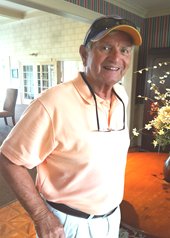
He jumped up, met us with all his southern hospitality, and began his tour. Woodrow Wilson Barnes was a retired history teacher working part time at the club. His great great grandfather, George Washington Barnes, was a Confederate veteran from North Carolina. Wilson led us to the fleet of golf carts, said "grab one and follow me". I jumped in the cart with Wilson, Don, Darryl, and Hal grabbed carts, and off we went through the clouds, mist, and drizzle of Monday morning, across the length of the course, towards the river.
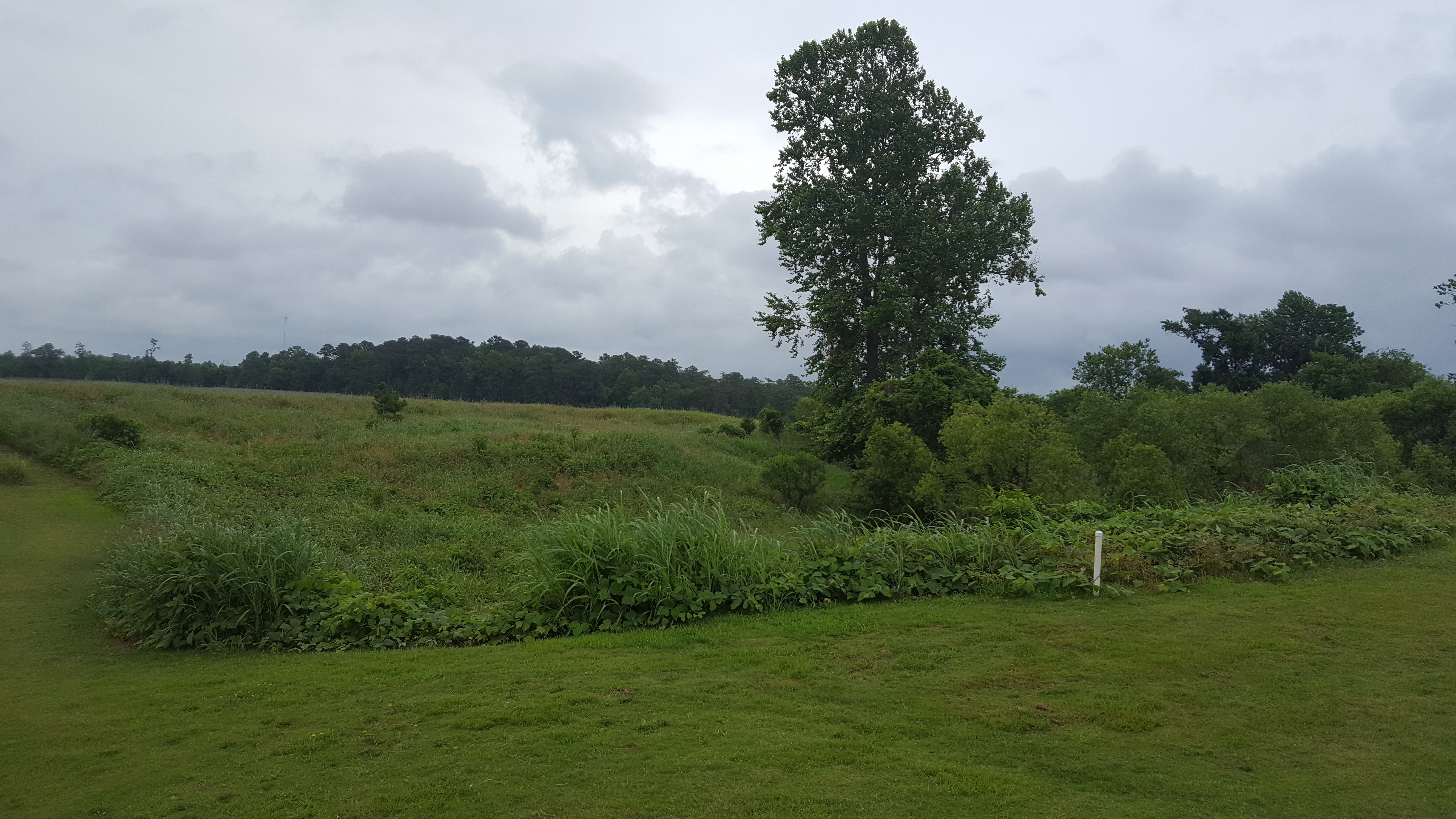
Wilson stopped us next to the fort, and warned us about the tall grass and the ticks. He could see that nothing was going to stop us, so he lead us out on the works walking along the outer parapet. He told us to tread slowly, and we could feel the indentation in the parapet where the gun embrasures were placed. The location was more on the Nansemond channel proper, placed right where it goes from wide from the bay to narrow towards the city of Suffolk. The fort overlooks the open view towards the mouth of the river on the bay, and to the front several hundred yards and to the left, was where the West Branch joins the main river.
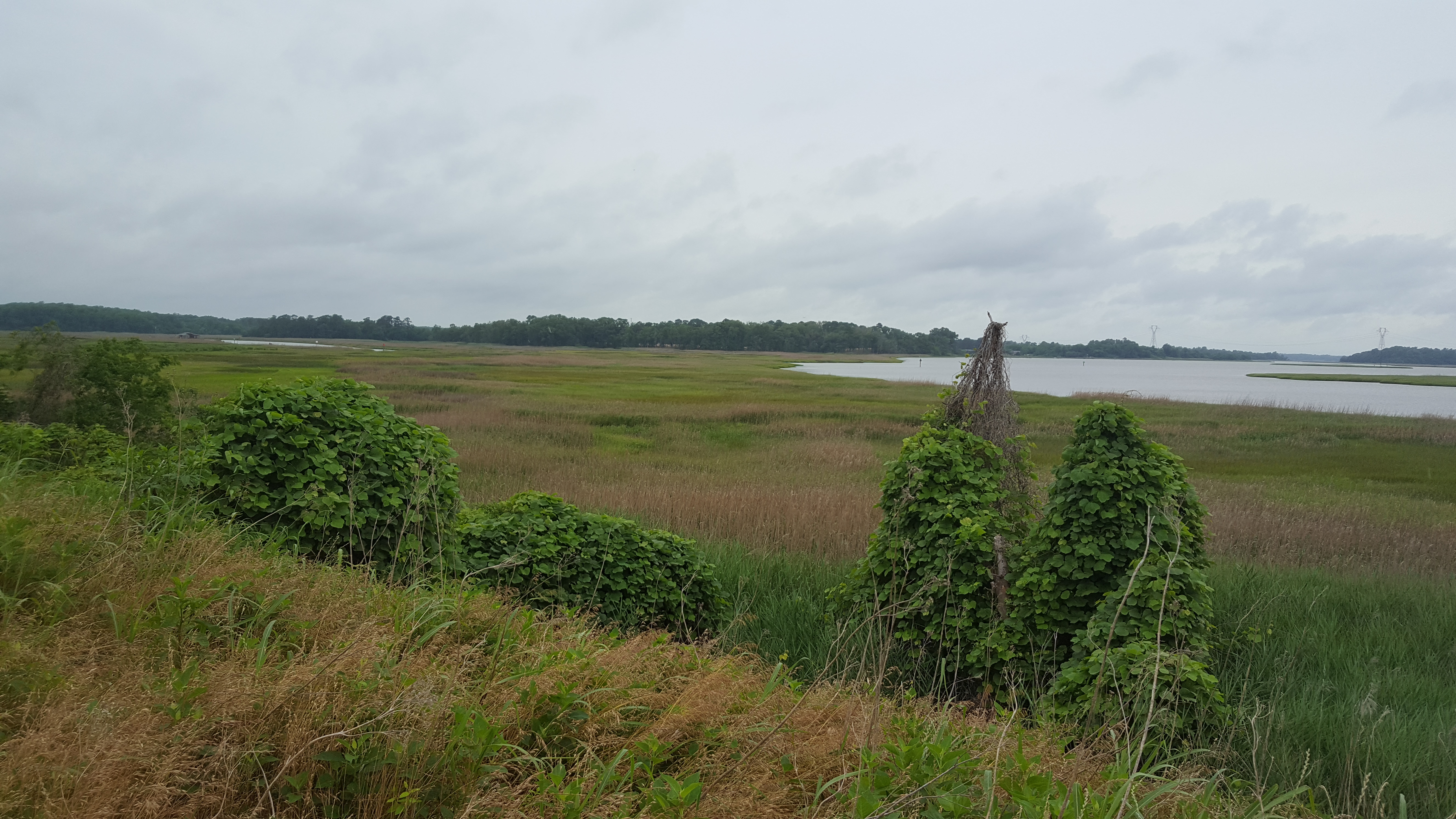
The works were in very good shape after 150 year and several hurricanes and a recent tornado. The parapets were complete, rising above the floor of the fort about ten feet of more. While Wilson spun the stories he knew about the actions at the fort, I visited the interior, knelt for my prayer to Seth, then sampled the soil for my collection. I returned to the folks on the parapet and took from my pocket Seth's letters passionately describing the actions at the place the evening of April 19th, 1863. His first person word rang true for us all, and it seemed like he was reading the letter to us. That was a Civil War moment.
Then Wilson took us beyond the fort to the rear, and off to the right of the fort. At this location, the river comes closest to the fort. It is the location thought to be the landing place of the "Stepping Stones" gunboat. Here is the place where it was "every man for himself", off the boat, into the water, onto the land, and into the fort. Bayonets were poised at the Rebel throats, "but not a man was pricked" before their surrender. From that location, I walked in the traces of Seth's steps, and up and over the works to the right rear of the fort. I doubt my feet were touching the ground.
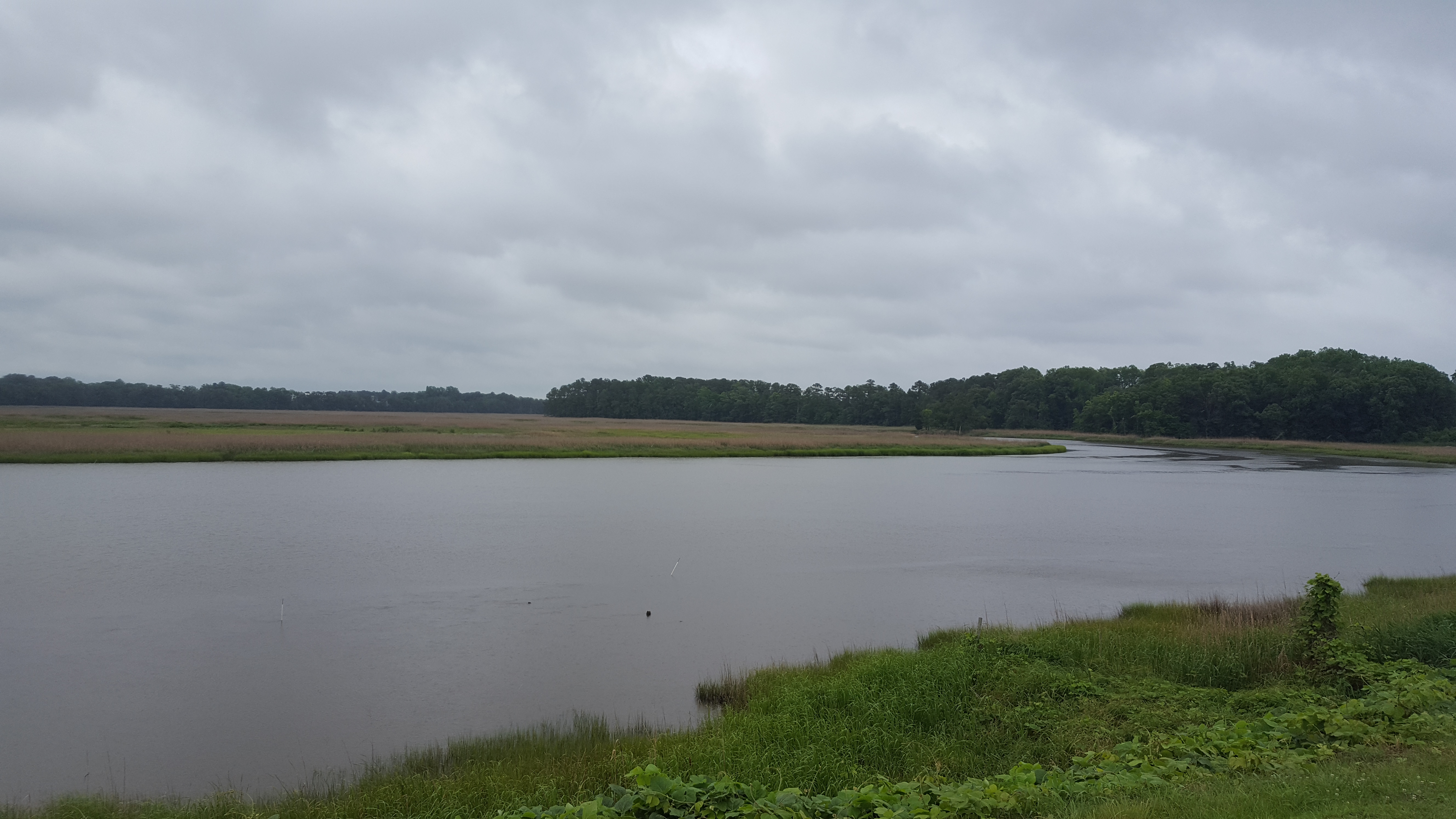
About this time, the rain started a little more steady, and Wilson indicated that it was time to head back to the clubhouse. The four of us were so thrilled with the experience, and his hospitality, that we all adjourned with smiles that we could not hide. Back at the club, Wilson showed us the artifacts on display, collected from the site over the years, local topographic maps showing the site, and a commemorative plaque noting the hard work of those whose efforts have preserved the fort, and continue to share awareness of the fort's significance. One name recognized on the plaque was Kermit Hobbs.
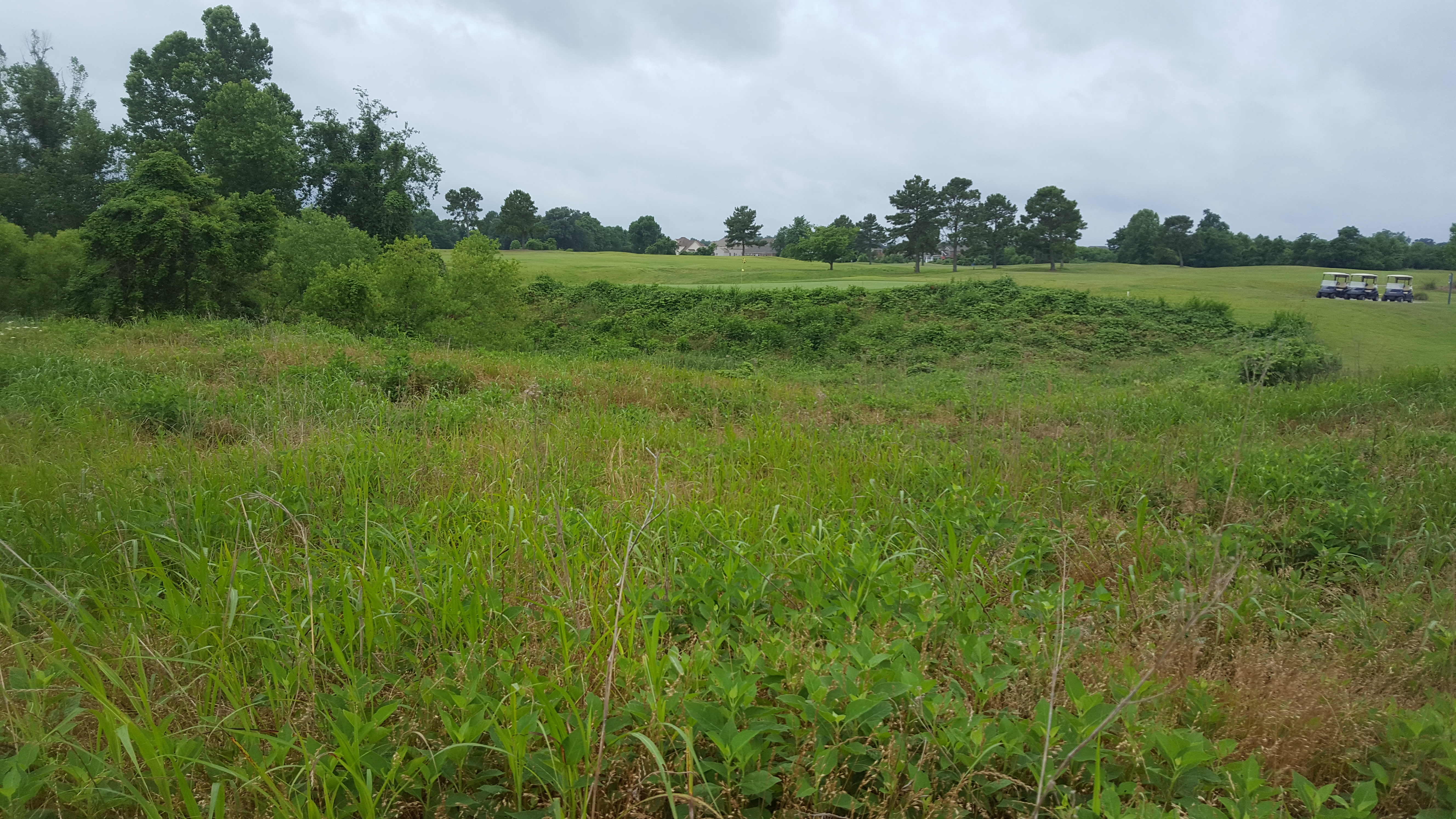
After profuse and genuine compliments, gratitude, and thanks to Wilson, we departed the club. I was extremely exhilarated, and almost giddy with joy. The visit had all come together better than anyone could have ever expected or desired. This had been a providential visit. It was meant to be. Many souls were there for us. All we had to do is feel them and live for them.
I never thought I would visit Hill's Point Battery, but indeed, you have got to believe. We had done it. And, yes, those people were very nice.




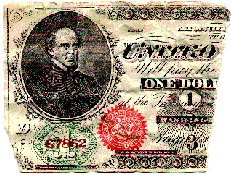

 We headed over to the golf club, found it via rather indirect navigation, but we were there. We parked our cars, and headed for the clubhouse. It was about 9:00am, and we were the only cars in the parking lot. I was feeling driven, yet apprehensive. All I could think of was coming this far, this close, and being turned away. I was prepared to offer to pay green fees, rent clubs and carts, just to get to the fort. I thought aloud walking up the steps, "I hope these people are nice."
We headed over to the golf club, found it via rather indirect navigation, but we were there. We parked our cars, and headed for the clubhouse. It was about 9:00am, and we were the only cars in the parking lot. I was feeling driven, yet apprehensive. All I could think of was coming this far, this close, and being turned away. I was prepared to offer to pay green fees, rent clubs and carts, just to get to the fort. I thought aloud walking up the steps, "I hope these people are nice."  He jumped up, met us with all his southern hospitality, and began his tour. Woodrow Wilson Barnes was a retired history teacher working part time at the club. His great great grandfather, George Washington Barnes, was a Confederate veteran from North Carolina. Wilson led us to the fleet of golf carts, said "grab one and follow me". I jumped in the cart with Wilson, Don, Darryl, and Hal grabbed carts, and off we went through the clouds, mist, and drizzle of Monday morning, across the length of the course, towards the river.
He jumped up, met us with all his southern hospitality, and began his tour. Woodrow Wilson Barnes was a retired history teacher working part time at the club. His great great grandfather, George Washington Barnes, was a Confederate veteran from North Carolina. Wilson led us to the fleet of golf carts, said "grab one and follow me". I jumped in the cart with Wilson, Don, Darryl, and Hal grabbed carts, and off we went through the clouds, mist, and drizzle of Monday morning, across the length of the course, towards the river. Wilson stopped us next to the fort, and warned us about the tall grass and the ticks. He could see that nothing was going to stop us, so he lead us out on the works walking along the outer parapet. He told us to tread slowly, and we could feel the indentation in the parapet where the gun embrasures were placed. The location was more on the Nansemond channel proper, placed right where it goes from wide from the bay to narrow towards the city of Suffolk. The fort overlooks the open view towards the mouth of the river on the bay, and to the front several hundred yards and to the left, was where the West Branch joins the main river.
Wilson stopped us next to the fort, and warned us about the tall grass and the ticks. He could see that nothing was going to stop us, so he lead us out on the works walking along the outer parapet. He told us to tread slowly, and we could feel the indentation in the parapet where the gun embrasures were placed. The location was more on the Nansemond channel proper, placed right where it goes from wide from the bay to narrow towards the city of Suffolk. The fort overlooks the open view towards the mouth of the river on the bay, and to the front several hundred yards and to the left, was where the West Branch joins the main river.
 The works were in very good shape after 150 year and several hurricanes and a recent tornado. The parapets were complete, rising above the floor of the fort about ten feet of more. While Wilson spun the stories he knew about the actions at the fort, I visited the interior, knelt for my prayer to Seth, then sampled the soil for my collection. I returned to the folks on the parapet and took from my pocket Seth's letters passionately describing the actions at the place the evening of April 19th, 1863. His first person word rang true for us all, and it seemed like he was reading the letter to us. That was a Civil War moment.
The works were in very good shape after 150 year and several hurricanes and a recent tornado. The parapets were complete, rising above the floor of the fort about ten feet of more. While Wilson spun the stories he knew about the actions at the fort, I visited the interior, knelt for my prayer to Seth, then sampled the soil for my collection. I returned to the folks on the parapet and took from my pocket Seth's letters passionately describing the actions at the place the evening of April 19th, 1863. His first person word rang true for us all, and it seemed like he was reading the letter to us. That was a Civil War moment. About this time, the rain started a little more steady, and Wilson indicated that it was time to head back to the clubhouse. The four of us were so thrilled with the experience, and his hospitality, that we all adjourned with smiles that we could not hide. Back at the club, Wilson showed us the artifacts on display, collected from the site over the years, local topographic maps showing the site, and a commemorative plaque noting the hard work of those whose efforts have preserved the fort, and continue to share awareness of the fort's significance. One name recognized on the plaque was Kermit Hobbs.
About this time, the rain started a little more steady, and Wilson indicated that it was time to head back to the clubhouse. The four of us were so thrilled with the experience, and his hospitality, that we all adjourned with smiles that we could not hide. Back at the club, Wilson showed us the artifacts on display, collected from the site over the years, local topographic maps showing the site, and a commemorative plaque noting the hard work of those whose efforts have preserved the fort, and continue to share awareness of the fort's significance. One name recognized on the plaque was Kermit Hobbs.  After profuse and genuine compliments, gratitude, and thanks to Wilson, we departed the club. I was extremely exhilarated, and almost giddy with joy. The visit had all come together better than anyone could have ever expected or desired. This had been a providential visit. It was meant to be. Many souls were there for us. All we had to do is feel them and live for them.
After profuse and genuine compliments, gratitude, and thanks to Wilson, we departed the club. I was extremely exhilarated, and almost giddy with joy. The visit had all come together better than anyone could have ever expected or desired. This had been a providential visit. It was meant to be. Many souls were there for us. All we had to do is feel them and live for them. 


